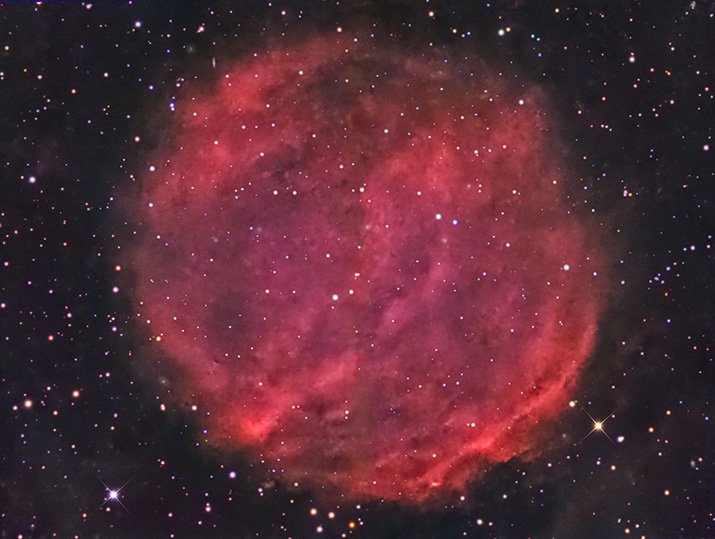
|
Date: Jan. 2023, Feb. 2024 - Location: Davis Mountains West of Fort Davis, TX
|

|
PuWe 1 (PLN 158+17.1) is a faint planetary nebula discovered by A. Purgathofer and R. Weinberger in May 1980[1]. This celestial object lies on the western edge of the Lynx constellation approximately 1,500 light-years from the Earth[1]. PuWe 1 is very large[3] for a planetary nebula. It spans an angular diameter of 20 by 20 arcmins[2]. At this size, it is the second largest observable planetary nebula[2] and is only surpassed by the Helix Nebula. Like all planetary nebulae, PuWe 1 was created when an aging red giant star, near the end of its life, violently expels layers of its atmosphere[3] until only an extremely hot stellar core is left. This stellar ember is known as a white dwarf star. Ultraviolet (UV) radiation from the central white dwarf[3] excites the expelled gas to glow forming the colorful object in the image above. The above image is orientated with north up and east to the left. Image integration and processing were accomplished using the software applications PixInsightTM, CCDStackTM, and PhotoshopTM. The image was assembled by mapping Ha to red and OIII to blue and green. The stars were overlaid with data from a red, green, and blue filtered image.
Member of the Dark Sky Observatory Collaborative
References
|